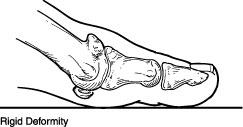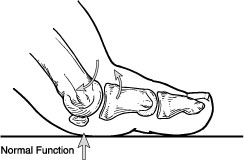What is Hallux Rigidus ?
Hallux Rigidus is a disorder of the big toe joint. It causes pain and stiffness in the big toe joint. With time, it gets increasingly harder to bend the toe.
Hallux Rigidus is a condition that affects the big toe joint, causing stiffness and limited movement. A discussion of the related causes, symptoms, and further treatments is done below so that after having well clarity of this condition, you can take steps to manage it effectively and find relief for your big toe.
Causes of Hallux Rigidus
- Osteoarthritis: The most common cause of hallux Rigidus is osteoarthritis, which leads to the degeneration of cartilage in the big toe joint.
- Overuse or Trauma: Repetitive stress or an injury to the toe joint can contribute to the development of hallux Rigidus.
- Structural Abnormalities: Certain foot deformities, such as high arches or flat feet, can increase the risk of Hallux Rigidus.
- Genetics: Family history may play a role in the development of this condition.
Symptoms of Hallux Rigidus
Recognizing the symptoms associated with Hallux Rigidus is important for early intervention.
- Stiffness in the big toe joint, particularly during movement or when walking.
- Pain or discomfort in the joint, especially through activities that involve bending the toe, such as running or squatting.
- Swelling around the joint.
- Difficulty wearing shoes with narrow toe
- Formation of bone spurs around the joint, visible as bumps.


Treatment Options
Several treatment options are available for managing Hallux Rigidus and lightening symptoms. These may include:
- Medications: Nonsteroidal anti-inflammatory drugs (NSAIDs) can help reduce pain and inflammation associated with hallux rigidus.
- Shoe Modifications: Wearing shoes with a wider toe box or stiff-soled shoes can help reduce pressure on the joint and provide better support.
- Orthotic Inserts: Custom orthotic inserts can be used to provide additional cushioning and support for the foot, redistributing pressure away from the affected joint.
- Physical Therapy: Specific exercises and stretches prescribed by a physical therapist can help improve joint mobility, strengthen the surrounding muscles, and alleviate pain.
- Injections: Corticosteroid injections may be recommended to reduce inflammation and provide temporary pain relief.
- Assistive Devices: The use of assistive devices, such as a cane or crutches, can help offload weight from the affected foot during periods of severe pain or inflammation.
- Surgical Options: In severe cases where conservative treatments fail to provide relief, surgical procedures such as cheilectomy (removal of bone spurs) or joint fusion may be considered.
Insole Clinic Strongly Recommends To:
Avoid wearing tight toe box shoes.
Try to wear footwear with a rocker’s bottom.
Use Insole Clinic recommended Hallux Rigidus Insole.
Our approved Hallux Rigidus Insole has a unique structure, designed to offload the big toe reducing stress, thus improving comfort.

